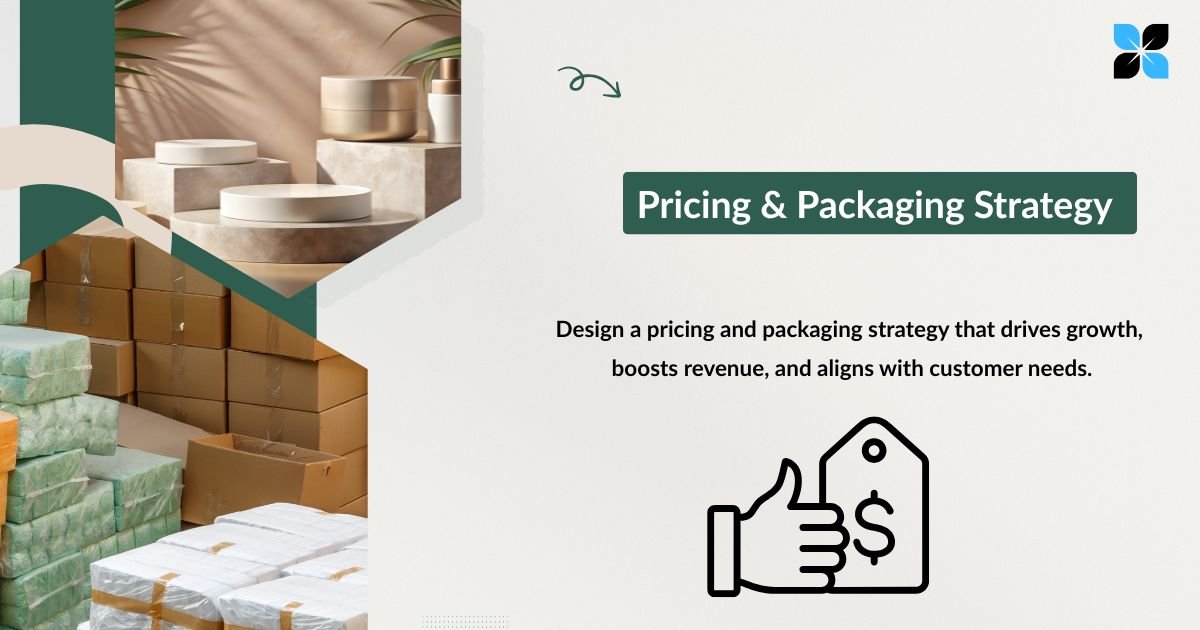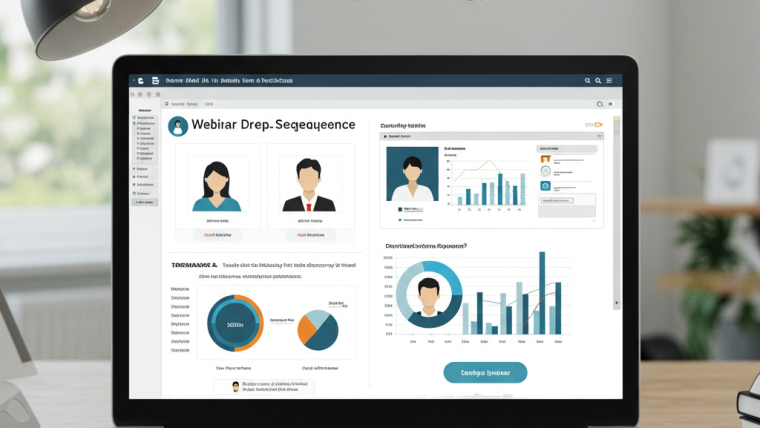Price and packaging strategy is just more than turning a number on a product or package service; It is an important lever that can generate revenue, increase customers’ satisfaction and strengthen the market status. With a customized approach, you can achieve permanent business development by beating the participants.
Whether you are launching a new product, entering a competitive market or reassessing your value offer, this broad guide will equip you with action-rich insights to develop the winning price and packaging strategy.Price and packaging strategy is just more than turning a number on a product or package service; It is an important lever that can generate revenue, increase customers’ satisfaction and strengthen the market status. With a customized approach, you can achieve permanent business development by beating the participants.
What Is Pricing and Packaging Strategy
Pricing and packaging strategy is the deliberate approach businesses take to price their products or services and bundle offerings into packages, with the goal of maximizing value for both themselves and their customers.
Here’s why it matters:
- Pricing directly impacts profitability. The wrong price can mean losing customers or leaving money on the table.
- Packaging shapes value perception. Strategically bundling or presenting products amplifies the benefits and drives purchase decisions.
Think of them as interwoven tools that, when fine-tuned, can build a stronger connection between your offerings and your target audience.
Why Pricing and Packaging Strategy Is Crucial
A robust pricing and packaging strategy offers several compelling benefits to a business.
1. Enhances Customer Perception of Value
Customers often associate price and packaging with the worth of a product. Premium pricing with sleek, attractive packaging can position your product as high-quality, while value pricing communicates affordability without sacrificing practicality.
2. Drives Revenue Growth
Well-implemented strategies ensure a healthy balance between competitive pricing and profitability. Setting a price that reflects your offering’s value and aligns with market expectations maximizes your earnings.
3. Meets Diverse Customer Needs
Packaging multiple products or services into tiers gives your customers choices, catering to different budgets and requirements. This adaptability encourages purchase while reducing buyer hesitation.
4. Strengthens Competitive Edge
Smart pricing strategies, such as dynamic pricing or psychological pricing, give you a leg up on competitors. Similarly, exclusive bundled offerings reduce the appeal of your rivals’ products.
Key Principles of an Effective Pricing and Packaging Strategy
Not sure where to start? These guiding principles form the foundation of any strong pricing and packaging strategy.
Align Pricing with Your Value Proposition
Customers pay for the value you provide them—not just the product or service itself. Ask yourself:
- What problem does your offering solve?
- What tangible benefits do customers gain by buying it?
Understanding the answers will help you set a price that reflects the true worth of your product.
Let’s know about : How to Host a Virtual Event
Know Your Target Audience
Dive deep into your customers’ needs, expectations, and price sensitivities. Use tools like surveys, feedback forms, and market research to stay tapped into what they value most. For instance, a customer shopping for luxury goods will focus on exclusivity, while budget-conscious shoppers prioritize affordability.
Conduct Competitive Analysis
Study your competitors’ pricing and packaging to identify gaps or opportunities. Are they undercharging and leaving room for premium offerings? Are their bundles confusing or underwhelming? Learn from their successes and weaknesses to refine your own approach.
Use Data-Driven Decision-Making
Monitor sales trends, customer feedback, and other key metrics to assess how well your pricing and packaging strategy performs. Adjust when needed. Tools like pricing analytics software can be invaluable here.
Communicate Value Clearly
Your strategy won’t succeed if your customers can’t understand why your product is worth the price. Leverage transparent descriptions, tangible benefits, and high-quality content to make your value proposition obvious and compelling.
Steps to Build a Winning Pricing and Packaging Strategy
Here’s a step-by-step roadmap to guide you through the process.
1. Set Clear Objectives
What are you hoping to achieve with your pricing and packaging strategy? Common goals include:
- Boosting revenue growth
- Increasing market share
- Expanding customer lifetime value
Define your objectives first to guide all subsequent decisions.
2. Choose a Pricing Model
There’s no one-size-fits-all pricing model, so pick the approach that best suits your business type and industry. Here are popular options:
- Cost-plus pricing (pricing based on the cost of production plus a markup)
- Value-based pricing (pricing based on the perceived value to customers)
- Competitive pricing (pricing based on rivals’ pricing strategies)
- Dynamic pricing (using demand and market conditions to set flexible prices)
3. Identify Key Offerings
What are your core products or services? Conduct an inventory to identify your main revenue drivers. Use this as the basis for packaging and determine which features or items pair well together. Think “complementary products.”
4. Design Product Tiers or Bundles
Introducing multiple pricing tiers enables customers to find an option that suits their budget. For example:
- Basic plan: Offers essential features at an entry-level price.
- Premium plan: Includes advanced features for those willing to pay more.
- Enterprise plan: Designed for large clients requiring extensive customization or volume.
Bundled offerings can also create value by grouping products customers typically buy together. Think of subscription services like streaming platforms or software packages that include several tools in one plan.
5. Employ Psychological Pricing Tactics
Tapping into customer psychology can nudge them to make a purchase. Examples include:
- Charm pricing: Pricing items at $4.99 instead of $5.00 to make them appear cheaper.
- Anchoring: Displaying a higher original price alongside a discounted price to make the latter seem like a deal.
- Odd-even pricing: Using round numbers (e.g., $100) to signify premium quality or odd numbers (e.g., $99) to signal savings.
6. Test, Analyze, and Optimize
Your first iteration won’t be perfect, and that’s okay. A/B test different pricing and package structures to see what resonates most with customers. Monitor results over time and refine your strategy based on real-world performance.
Real-Life Examples of Great Pricing and Packaging
Apple
Apple’s pricing and packaging strategy perfectly aligns with its value proposition of being a premium, high-quality tech brand. Its tiered pricing plans for products like iPhones and Macs allow customers from varying income brackets to buy in, while offering upsell opportunities.
Netflix
Netflix mastered simplicity with its tiered subscription plans. Each plan clearly outlines what the user receives (e.g., standard definition vs. ultra-high definition) to help customers choose the level that suits them best.
Dollar Shave Club
Dollar Shave Club disrupted the shaving industry with its subscription bundles. By offering flexible packages at affordable prices, they converted hesitant one-time buyers into loyal, repeat customers.
Take Your Pricing and Packaging to the Next Level
A well-crafted pricing and packaging strategy can elevate your business and forge stronger customer relationships. By aligning your strategy with customer needs, leveraging data, and emphasizing value, you can optimize revenue and differentiate your business in the market.
Would you like expert guidance to refine your approach? Contact us today to explore tailored solutions for your pricing and packaging strategy.








Webinar Analytics: A Complete Guide to Measuring Success and Improving Performance
The Ultimate Webinar Follow-Up Strategy to Turn Attendees into Customers
Webinar Accessibility Best Practices: How to Make Your Online Events Inclusive for All
Webinar Personalization: Tailoring Content to Audience Segments for Maximum Engagement